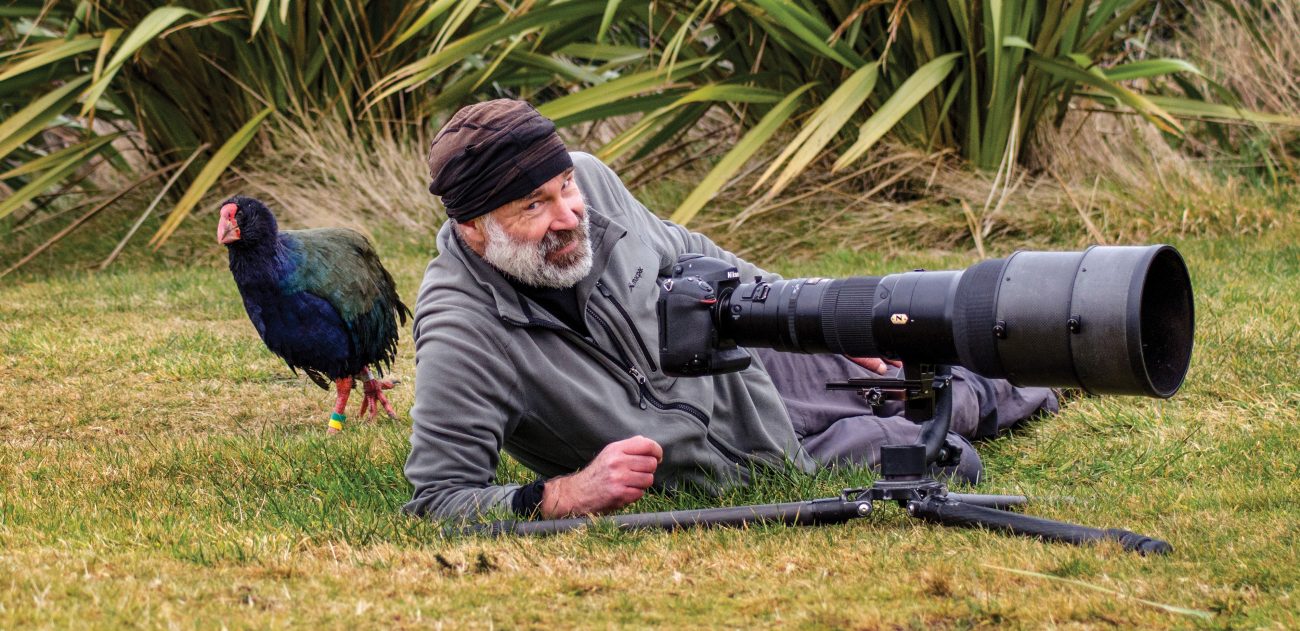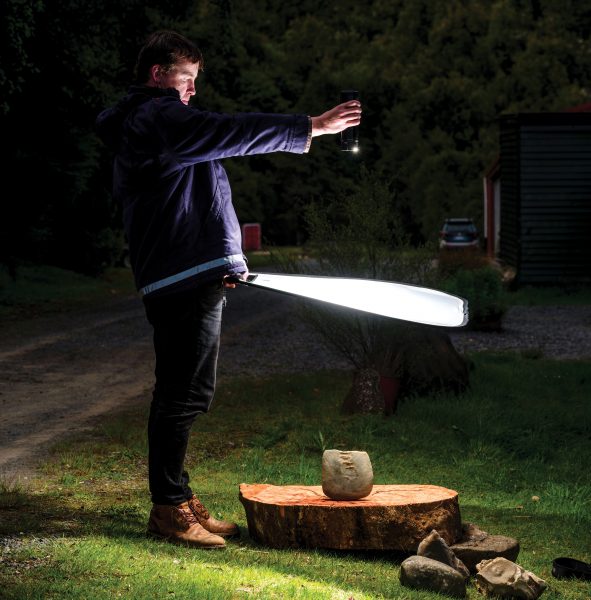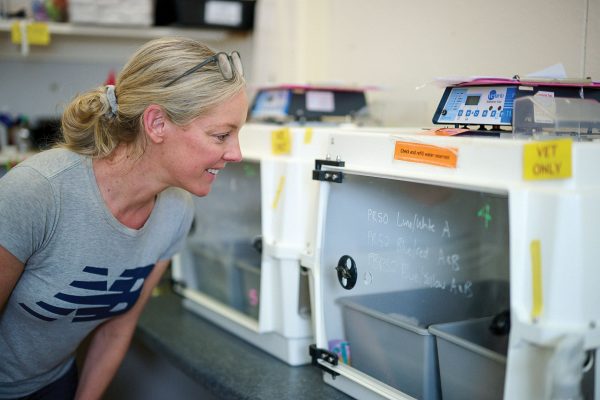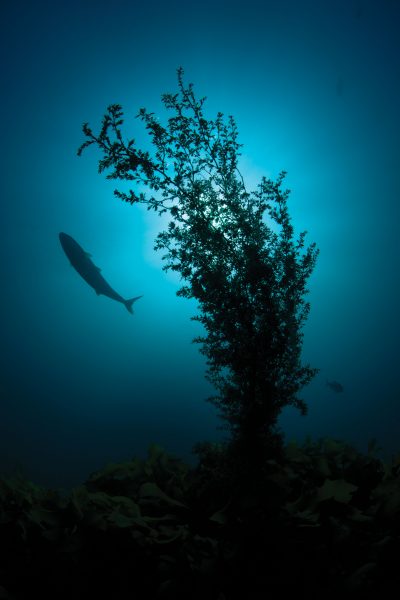Close encounters of the bird kind
Craig McKenzie stalks takahē in Te Anau.

After 40 years dabbling in photography, Craig McKenzie decided he was going to make a fist of it, starting in his own backyard. The Otago Peninsula was a rich hunting ground for a bird enthusiast, and McKenzie filled his hard drives with thousands of images.
It wasn’t long, however, before he had photographed every avian species around Dunedin from every conceivable angle. He began looking further afield—shooting stories for New Zealand Geographic on critically endangered black stilts and orange-fronted parakeets. His work photographing takahē chicks for this issue presented unusual challenges.
Takahē are bred in semi-captivity, within predator-proof pens at Burwood, Te Anau, usually with just two adults and two chicks per pen. McKenzie knew, however, that this wasn’t going to be as easy as it sounded.
“Each pen is around a hectare in area, and covered in tall tussock,” he says. “The adults keep the chicks well hidden, and because there was plenty of grasses and seed available, they weren’t attracted to the supplementary feed on offer. You know they’re in there, but you just can’t see them.”
There were two pens where McKenzie didn’t even get a sighting, and another where he caught just a glimpse of some chicks beneath the tussock—enough to fire off a few frames. Finally he discovered a family group that were happy to strut in front of the lens.
Next week McKenzie is renewing his commitment to shooting in his own backyard, and switching from birds to bugs. He’s heading into Old Man Range with fellow Geographic photographer Bryce McQuillan: “Just to see what we can find.”

















